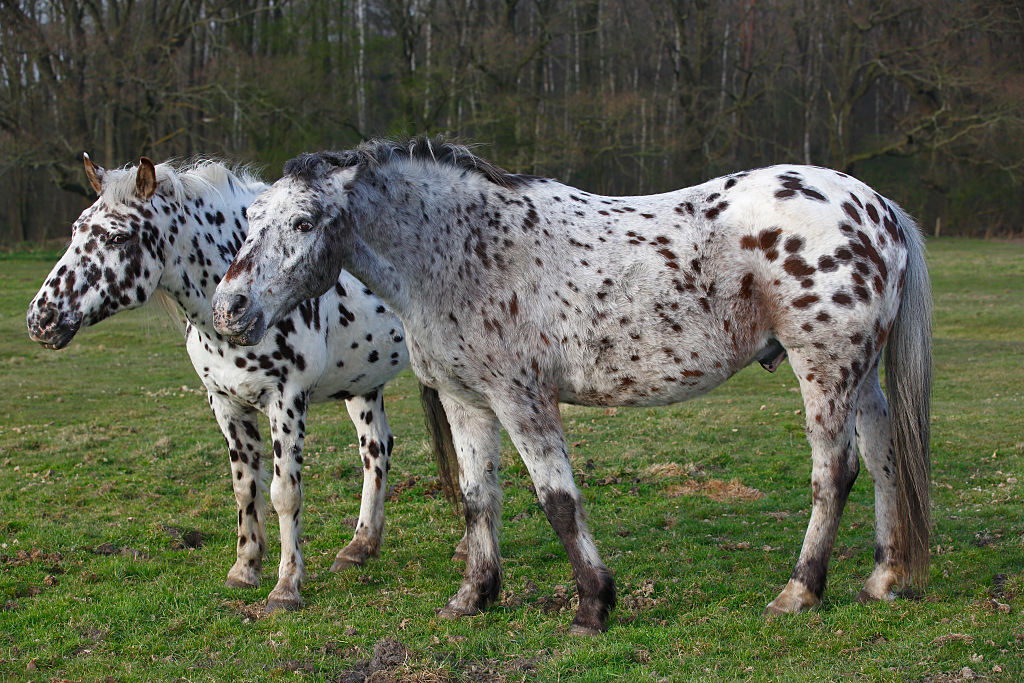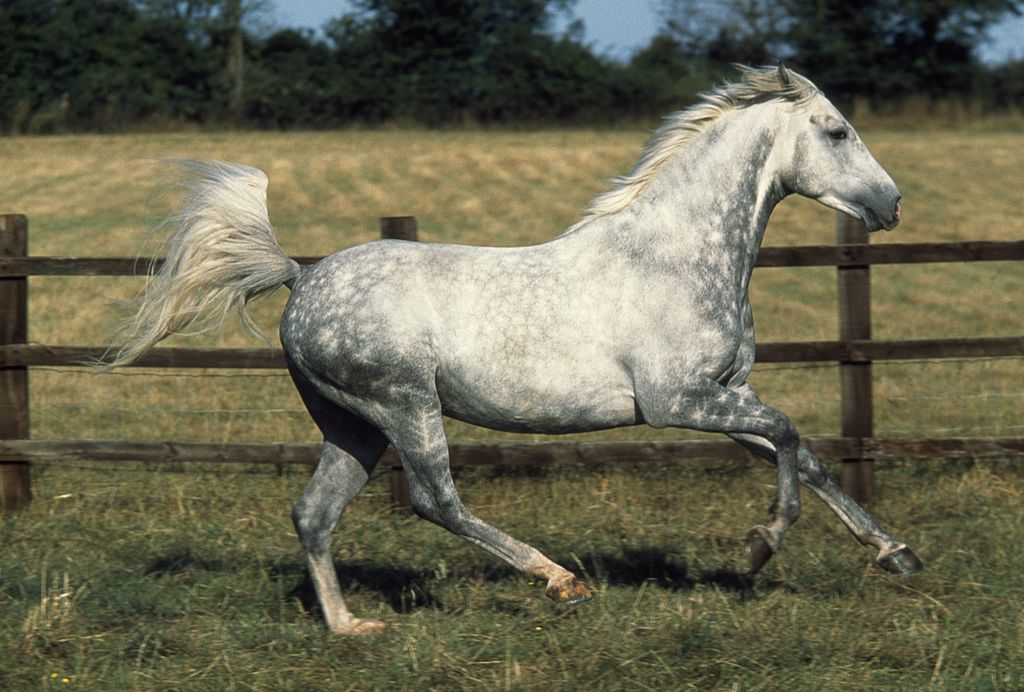10+ Completely Unique Horses With Rare & Stunning Coats (They’re Truly Majestic)
Horses display an incredible range of coat colors—from classic shades like chestnut, bay, and grey to more unusual tones like buckskin, paint, and palomino. While the familiar colors are stunning, it's often the rarer patterns and hues that really stand out.
The horses below showcase some of the most breathtaking and unique coats around. Whether it’s dazzling dapples or fur that gleams like gold, these equine stunners are truly unforgettable.
Champagne Horses Are As Expensive As Their Name Suggests

This horse is a gold champagne—a rare color influenced by the champagne gene, which affects the skin rather than the coat. When this gene is present in chestnut horses, it often gives them a blonde appearance due to their lighter skin tone. Unlike most horses, which typically have dark or black skin, champagne-colored horses have pink or light skin, especially noticeable in areas without pigmentation.
Take a close look at this horse's ears—you’ll see that her skin is pink throughout.
This Blue Roan Is Enjoying Her Lunch

Blue roans are similar to red roans, but the main difference lies in their base coat. While red roans have a chestnut foundation, blue roans begin with a black coat that's flecked with fine white hairs. Typically, the mane and tail stay mostly black, with the white hairs concentrated on the body.
This blue roan, for instance, has a dark mane and tail, though some may show a hint of red in those areas. The blend of white across the black coat can create a soft bluish shimmer, especially when the light hits just right.
Palominos Are The Barbies Of The Horse World

Palominos are undeniably eye-catching horses, known for their golden tan coats paired with striking blonde or white manes and tails. Their distinctive coloring comes from the cream gene, much like cremellos.
While palominos are a variation of the chestnut coat, they're far less common than standard chestnuts or bays. The shade can vary quite a bit—some palominos lean toward a deep, rich gold, while others appear much lighter and more blonde.
These Horses Are Called Leopard Appaloosas For A Reason

As you might know, Appaloosa horses come in a wide variety of shapes and patterns. These particular ones are known as leopard Appaloosas. They're easily recognized by their white coats covered in dark spots that extend all the way down past their knees.
Like many Appaloosas, they have visible scleras—the white part of the eye—which you can see even when their eyes are relaxed and open. Their manes and tails also tend to be mottled or mixed in color. With their striking spots, they almost resemble oversized Dalmatians!
This Perlino Is Enjoying The Sun A Bit Too Much

This horse sports a perlino coat—another stunning result of the cream gene at work. Perlinos are homozygous cream bays, meaning their original bay coloring has been altered by two copies of the cream gene. While a typical bay horse has a brown body with black mane and tail, a perlino displays a creamy coat with subtle reddish or copper tones in the mane and tail.
Since many cream-based coats can look quite similar, it's often difficult to tell them apart by sight alone. That’s why DNA testing is sometimes needed to confirm the exact coat color.
Does This Pinto Horse Remind You Of Another Animal?

Let's begin with a timeless favorite: the pinto coat. Pinto horses are instantly recognizable by their striking mix of white and another color, often black or brown. The high-contrast patches can give them a cow-like appearance, especially when their coloring is black-and-white or brown-and-white.
It’s easy to confuse pintos with paint horses, but here’s a fun distinction—not all pintos are paints. "Paint" refers to a specific breed that typically includes quarter horse or thoroughbred lineage, whereas “pinto” simply describes the coat pattern, regardless of breed.
Dapple Grey Coats Change With Age

This stunning horse is a dapple grey Arabian, or Arab. Interestingly, the term "grey" in horse coat colors doesn't refer to a static shade—it describes a gradual transformation. Most grey horses are born with dark coats, often black or brown, and slowly lighten as they age.
Over time, as the coat shifts toward white, unique dapple patterns—light circles or mottling—begin to emerge. These dapples are most prominent during the horse's middle years. Since the horse in the photo still displays noticeable dappling, it’s likely a younger grey, not yet fully transitioned to a solid white coat.
Flaxen Manes Always Stand Out

This beautiful horse sports a chestnut coat paired with a striking flaxen mane and tail—an eye-catching contrast where the mane and tail are noticeably lighter than the body color.
On its face, the horse features a distinct white marking known as a **star and stripe**. The "star" appears as a small white spot centered on the forehead, while the "stripe" is a narrow white line that runs down the length of the nose. In this case, the two markings are connected, creating one continuous blaze that adds even more charm to this already handsome horse.
The Sabino Gene Is Quite Unique

"Sabino" refers to a unique spotting pattern found on some horses, characterized by distinct white markings caused by the Sabino 1 gene. In fact, there's a DNA test that can confirm whether a horse carries this gene, helping differentiate true sabinos from roan horses, which we'll discuss shortly.
Typically, sabino horses display white patches concentrated around specific areas like the face and belly, rather than evenly distributed throughout their coats. In contrast, roan horses have white hairs mixed throughout their entire body, giving their coat a more blended, speckled look.
A Red Roan Isn't Really Red

This stunning horse is a red roan quarter horse. You can easily spot it as a quarter horse because of its well-developed, muscular hind end (or butt). A roan is a horse with a solid base color, but its coat has white fur mixed in.
Red roans have a chestnut base coat, and the intermingling white fur can give them a pinkish appearance. However, they still have solid brown manes and tails.
This Rabicano Knows She's Special

Horses displaying roaning around their tails and flanks are referred to as rabicanos. This pattern is sometimes called "white tickling." While similar to roans, rabicanos aren't true roans, as the white hairs are confined to specific areas of their bodies.
Typically, rabicanos have two-toned tails, with white fur extending down the tail, creating a white top and a brown bottom. The term "rabicano" comes from Spanish, where "rabo" means tail and "cano" means white.
Appaloosas Come In All Shapes And Sizes

Appaloosas are horses with spotted coats. Like roans, Appaloosas are a combination of a common base coat color and the color of their spots. Darker appaloosas have white spots, and lighter appaloosas have dark spots.
Appaloosa horses also usually have really bright eyes. The whites of their eyes, or their scleras, are visible, which is unique for horses. Appaloosas also have striped hooves, which is a result of their spotted pigmentation extending past their legs.








